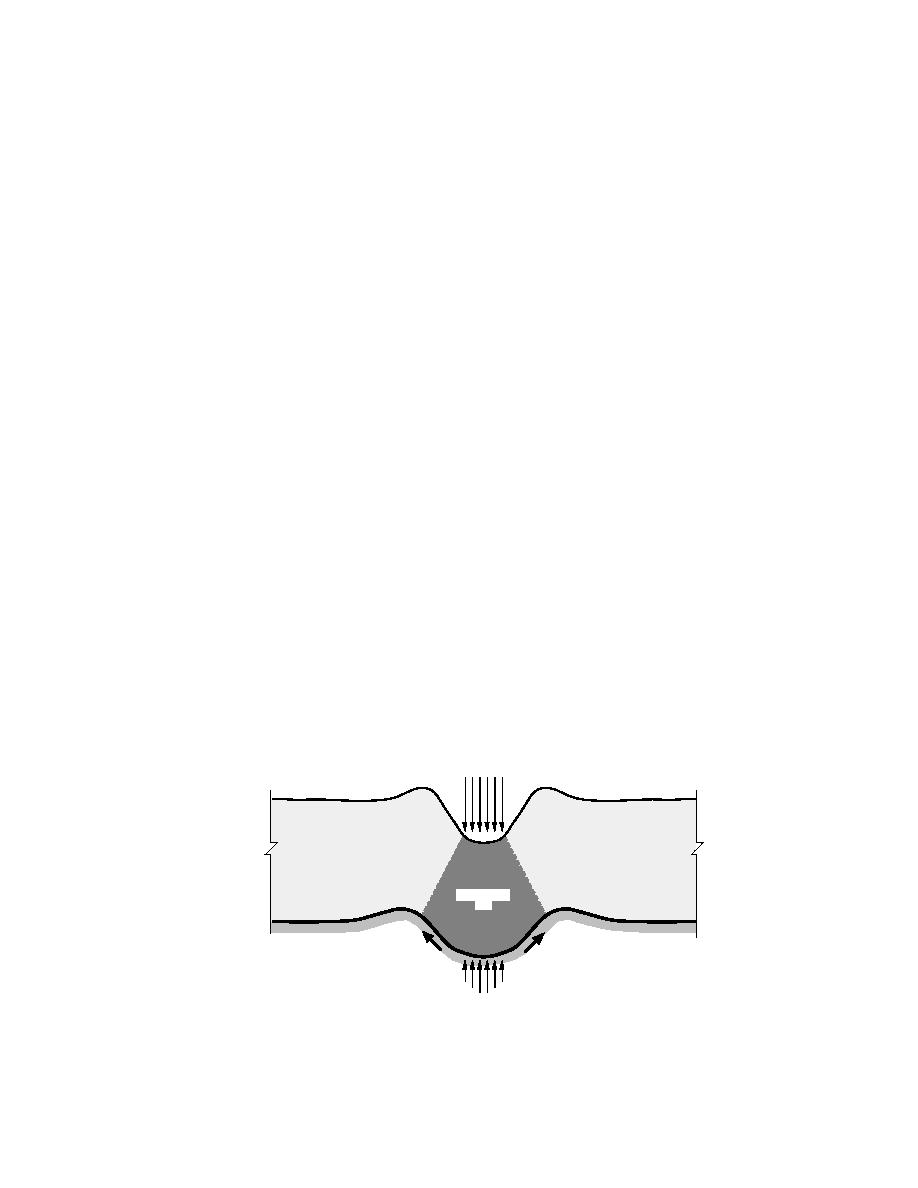
with the M60 and not the HEMTT, because tracks
granular fill placed on lower bearing capacity sub-
are significantly more destructive on corners. The
grades to help bear traffic loads. For subgrade
drivers attempted a constant vehicle speed over
CBRs of 1 to 3, a geotextile is needed to keep fill
all the sections 16 to 32 km/h (10 to 20 mph) and
and subgrade soil separate. At CBR values less
any significant speed variation caused by the sur-
than 1.0, geotextiles or geogrids often provide
faces was recorded.
reinforcement as well as separation. When used
The performance of vehicles and test sections
with little or perhaps even no fill, high strength/
was evaluated after 1, 10, 25, and 50 passes of
high modulus geosynthetics can help bear loads
each vehicle. Each test section was evaluated for
through "membrane support" of the wheel loads
rutting, lateral expansion of the trail, failure of the
(Fig. 10) (Giroud and Noiray 1981). Membrane
surface material, interference of the material with
support refers to the deformation and tensioning
the vehicle, movement of the surface material,
of the geosynthetic to help bear the traffic load
vehicle slipping, repairs, etc. The vehicle drivers
(i.e., ruts must form in the geosynthetic). Even
evaluated the performance of the test sections
though the stabilization techniques tested were
with respect to vehicle operation, loss in traction,
not specifically chosen for their ability to improve
braking, vehicle handling and steering, necessary
traction, qualitative observations of traction were
adjustments to vehicle speed, material interfer-
documented.
ence with vehicle components, etc. The drivers
The remainder of this section describes the traf-
also gave each test surface an overall ranking, as
ficking tests that were conducted and observa-
indicated on the sample evaluation forms, also
tions made during and after the tests.
provided in Appendix G. Final observations and
photo documentation of each test section were
Sloped trail
completed after each vehicle completed the 50
Trafficking of the sloped test site occurred over
passes. The vehicle drivers and test section evalu-
three days. It began on 20 March 1995, with the
ators were then interviewed on video to docu-
HEMTT making 30 passes. The weather was
ment users' thoughts and ideas, expanding on the
snowy, rainy, and windy. On 21 March 1995, the
written surveys.
weather cleared and the HEMTT made an addi-
As mentioned earlier, all of the stabilization
tional 20 passes followed by 25 passes with the
techniques tested in this program improve soil
M60 tank. Tank trafficking finished with 25 passes
bearing capacity by distributing traffic loads over
on 22 March 1995. The weather was sunny and
a larger area. "Rigid" materials with flexural stiff-
clear and the soil appeared to be drier on the third
ness (i.e., wooden mats, slash and possibly to a
day of trafficking.
small degree, the geonet) distribute loads to the
After the HEMTT and before tank trafficking
thawing soil largely through beam action. Chunk-
began, one 20-cm- (8-in.-) diam. tree trunk was
wood and tire chips are alternatives to the use of
removed from the slash test section at the request
Wheel
Load
Cohesionless
Base Material
Wheel Path
Rut
Geotextile
Soft Cohesive
Tension
Subgrade
in Fabric
Vertical Support Component
of Membrane-type Action
Figure 10. Membrane support (Giroud and Noiray 1981).
16



 Previous Page
Previous Page
